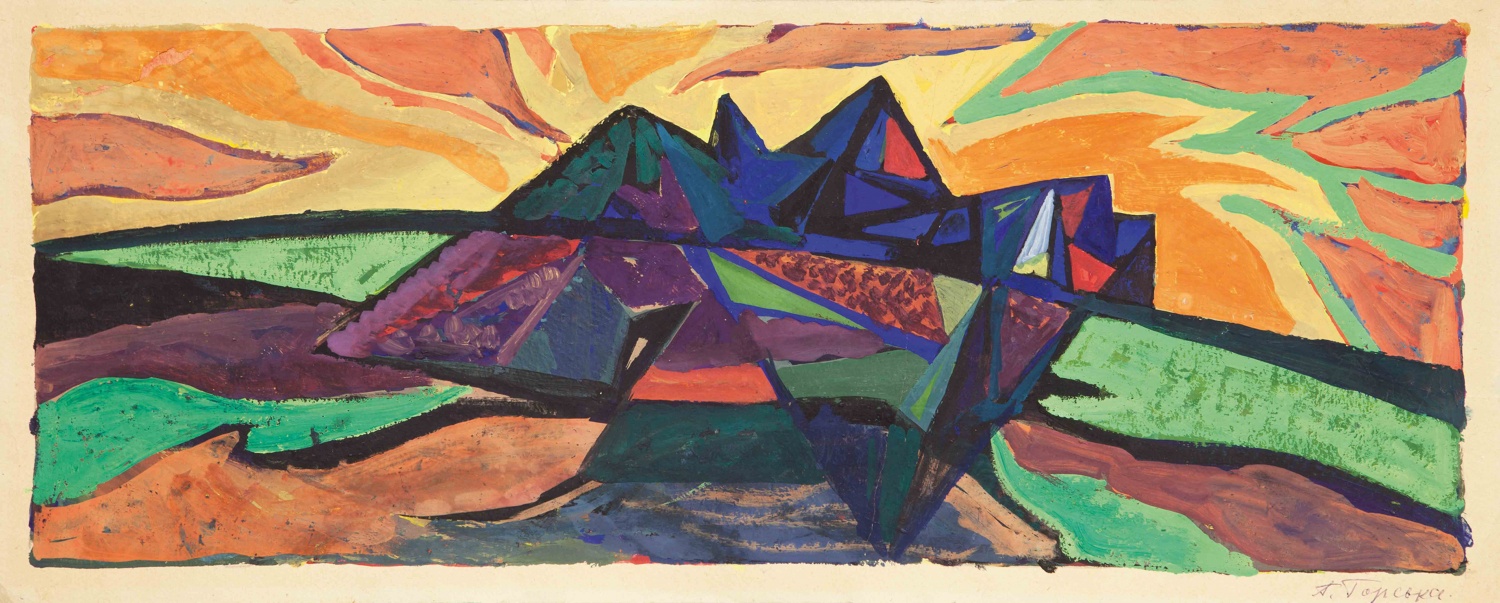
Alla Horska Mountain Lanscape (c. 1970)

Alla Horska Mountain Lanscape (c. 1970)
Time: Tuesdays 11:30–12:50 & 13:30–14:50, Thursdays 11:30–12:50
Venue: KSE Dragon Capital building, Shpaka 3, room 4.05
Office hours: Thursdays, 10-11:30, Math department coworking space (floor 5.5)
Commutative algebra is the study of commutative rings and modules over them. It serves as a foundation of algebraic geometry and algebraic number theory. Typical examples of commutative rings are the ring of integers Z and the ring of polynomials $k[x_1, …, x_n]$ in $n$ variables over a field $k$ (we will encounter lots of more interesting examples). Geometrically, the latter can be thought of as the ring of polynomial functions on the $n$-dimensional space. Such a geometric perspective is very useful, enabling us to use our visual intuition when working with the polynomial ring. It turns out that one can view any commutative ring geometrically: to a commutative ring $R$ we can associate a topological space ${\rm Spec}(R)$, called its spectrum, whose geometry reflects the algebraic properties of $R$. Thus (unlike elsewhere in algebra, e.g. for noncommutative rings), in commutative algebra one can mix and match the precision and formality of algebra with geometric intuition.
The goal of the course is to introduce the basic concepts of commutative algebra, such as modules, local rings, valuation rings, Noetherian rings, completion, the Krull dimension etc., emphasizing the geometric meaning behind them when possible. A more detailed list of topics can be found below.
Syllabus: [PDF]
Problem sets: 1 (due Oct 21), 2 (due Oct 28 Nov 4), 3 (due Nov 11), 4 (due Nov 18), 5 (due Nov 25), 6 (due Dec 4), 7 (due Dec 16)
Homework solutions: [PDF].
For preparing for the exam: list of required material, practice exams.
Exam (with solutions): [PDF].
The lecture notes (50+ pages) exist, but many sections are in disarray. I won't post them here, but I can share them upon request.
| Oct 14 | Introduction and first notions |
| Oct 16 | Localization and ${\rm Spec}(A)$ |
| Oct 21 | The topology on ${\rm Spec}(A)$ |
| Oct 23 | Modules I (Masha Vlasenko) |
| Oct 28 | Modules II (Chemy Grabowski) |
| Oct 30 | Modules III (Chemy Grabowski) |
| Nov 4 | Modules IV |
| Nov 6 | Modules V. Flat, locally free, and projective modules. Kähler differentials. |
| Nov 11 | Integral elements and integral homomorphisms |
| Nov 13 | Noetherian rings and Artin–Tate |
| Nov 18 | Nullstellensatz and corollaries |
| Nov 20 | Chevalley's theorem (I) |
| Nov 25 | Chevalley's theorem (II). Fun with $\mathbb{F}_p$ |
| Nov 27 | Noether normalization |
| Dec 2 | Separable field extensions |
| Dec 4 | Finiteness of integral closure. Graded rings. |
| Dec 9 | Completion I |
| Dec 11 | Completion II |
| Dec 16 | Dimension theory |
| Dec 18 | Exam |
Contact: pachinger@kse.org.ua